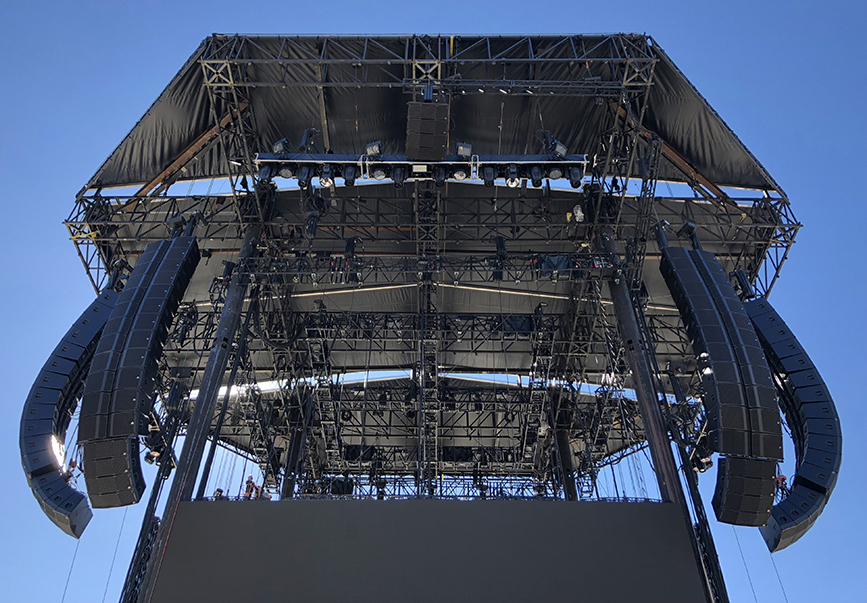
Step 6 – Optimizing the System: Phase Aligning the Subs
Note: At this stage the sub bass systems need to first be phase aligned to the mains system. As the instructions on how to do this are beyond the scope of this document. Please refer to the many posts on the web with appropriate documentation explaining in detail how to achieve this alignment. (For example search for “Aligning Subs” under at http://www.bobmccarthy.com.)
Depending on the physical relationship between the mains, the many possibilities of placement relative to the mains system, and the varied sub bass systems, it is vital that the sub bass is phase aligned to the mains BEFORE attempting to time align any of the support systems to the mains system as this alignment of the subs to the mains may require adding extra delay time to the mains, therefore changing any delay required on the support systems. Once the subs are phase aligned to the mains, correctly go to the master level of the subs and turn them off again for the next steps in the optimization process.
Step 7 – Tuning the System: Tuning the Support Systems
It is important to realize that while the sound engineer at the mixing position will usually be hearing both the left and right mains (in stereo!), large sections of the audience may only be hearing one smaller or single (mono!) support system of the total system (i.e., side hang or front fill systems). This fact forces us to first tune the main (mix reference) system first and then, repeating the same tuning methods, individually tune each of the separate support systems so that they all have reasonably closely matched “tonal balance” characteristics. In the final system optimization process all of the support systems must then be carefully level balanced and timed relative to the main system to achieve a completely even, matched full system for the majority of the audience listening area.
Another factor common with many large system setups is that the various support/fill systems are using many different types/models of speaker cabinets that are NOT the same types/models as being used for the main left/right system (i.e., in their raw state they will NOT tonally sound the same as the main system!). This means these support systems MUST be tuned and optimized separately to sound tonally as close as possible to the main left/right system.
Tuning all the extra support systems of a larger system uses exactly the same measurement setup and methods that were used to tune the mains. The measurement microphone needs to be moved to an area that is hearing a good overall average of what the audience will be hearing within each of the support sound systems’ coverage area.
Whenever the microphone is moved be sure to reset the delay offset time within the FFT software to compensate for the new distance from the sound source.
Again be sure to mute all other sections of the sound system except the one section the measurement microphone is meant to be hearing.
Starting with Step 3 – “Balancing the X-Over Band Levels” (if accessible!) repeat steps 3 to 5 exactly until all the additional support systems of the main system are individually tuned to sound as tonally matched as possible to the main system.
**Note: Due to the danger of excessive low frequency coupling anomalies between the side hang system and the mains front system (which will alter the perceived low frequency balance at the FOH position) be very careful when tuning the Side Hang system.
In many highly reverberant venues the mere fact that by using a side hang system (which is of course needed for audience coverage) we are now exciting a whole different area of the venue which can create serious reflections, low frequency summation together with various other problems requiring much additional tuning/balancing adjustments.
To minimize these interaction problems when tuning the side hang system make sure that it does NOT have an excessive raised shelf in low frequency response below 125 Hz. In fact, it is a very good policy to tune the Side Hang array to have a very flat low frequency response as, especially within the audience area where the mains and the side hangs overlap, there will usually be more than enough low-frequency energy due to the inherent coupling between those two systems.
